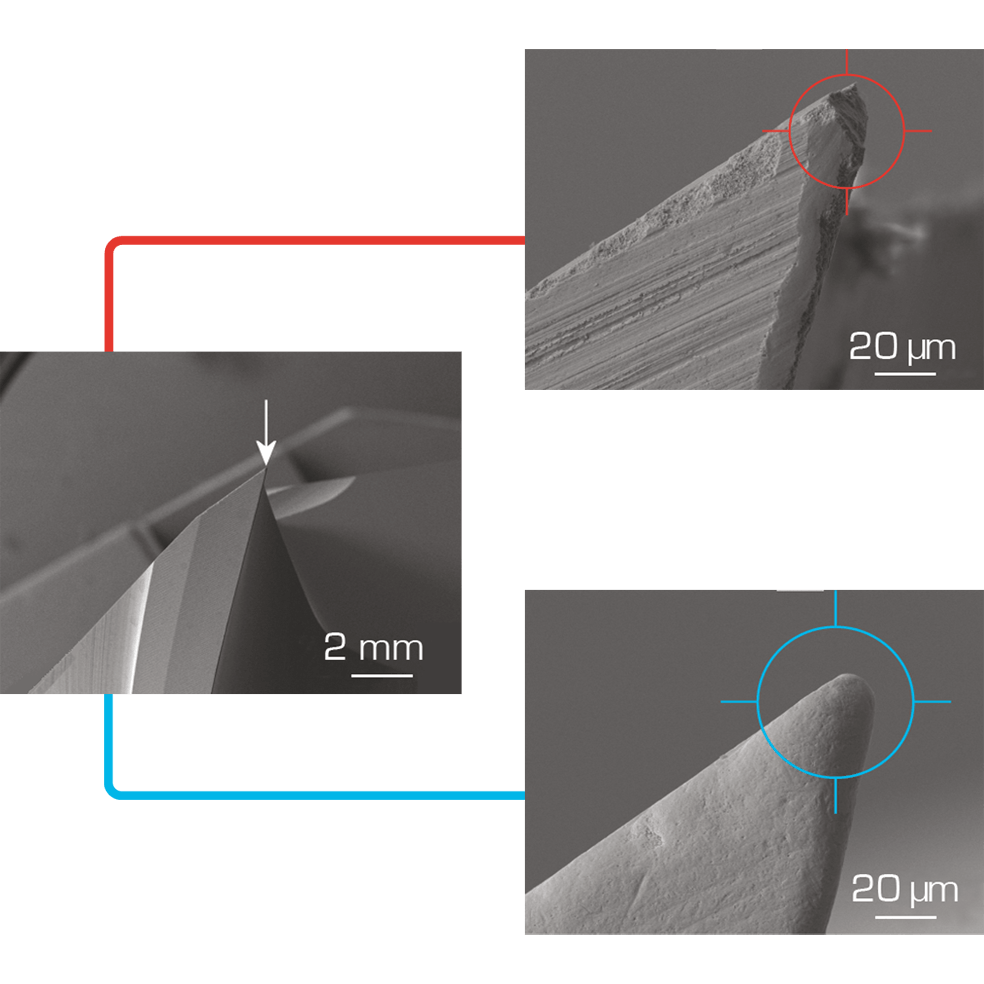Edge pre-treatment and edge post-treatment
Pre-treatment and post-treatment of the edges are very important processes in the turnkey system in order to exploit the full potential of a PVD coating.
The main objective of edge pre-treatment is to increase the stability of a cutting-edge and thus the performance of a tool.
Advantages of cutting-edge rounding
- Reduces chipping along the edge
- Reduces the so-called “antenna effect” in PVD coatings on sharp edges and thus reduces the stress in a coating
- The more an edge is rounded, the thicker coating is possible
- Higher cutting-edge stability
- Avoids chipping of the cutting-edge as well as chipping of the coating during the machining process
- Increase in tool life despite “blunt” cutting-edge

Edge post-treatment
One of the problems that can arise without post-treatment of the surfaces is the jamming of chips. This can result in the tool, e.g., a drill, breaking.
Objectives of the edge post-treatment
- Removal of droplets after PVD coating
- Reduction of surface roughness
- Improved chip-flow for cutting tools
If the post-treatment is too strong, the cutting-edge can be exposed. This leads to:
- Immediate, full, and direct contact of the cutting-edge with the workpiece material
- Low heat and chemical insulation
- Low coating thickness near the cutting-edge
- A larger cutting radius, which creates a larger area without a coating
- The impression of a defective PVD coating
The most common edge pre-treatment methods are:
- Dry blasting
- Wet blasting
- Drag finishing
- Brushing
- Magnet finish
The most common post-treatment methods are:
- Wet blasting
- Drag finishing
- Polishing blasting
PLATIT has a broad expertise in edge pre- and post-treatment for PVD coating. We offer and integrate all the products necessary for the turnkey system.
For more information on pre-treatment and post-treatment procedures, see our compendium on pages 101 to 105 and on page 109 by clicking here or contact us directly.